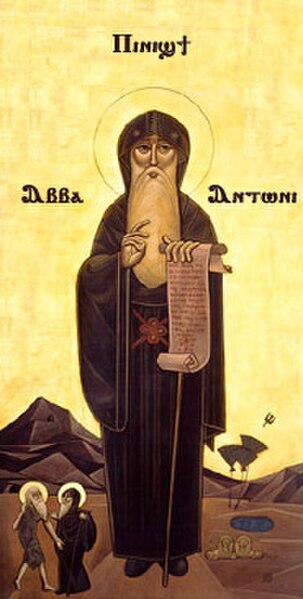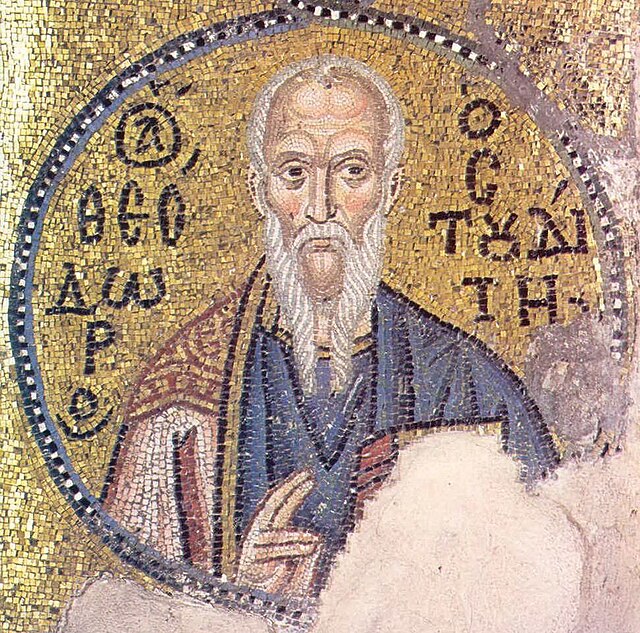Eastern Christian monasticism
Eastern Christian monasticism is the life followed by monks and nuns of the Eastern Orthodox Church, Oriental Orthodoxy, the Church of the East and Eastern Catholicism. Eastern monasticism is founded on the Rule of St Basil and is sometimes thus referred to as Basilian.
St. Anthony the Great, considered the Father of Christian Monasticism
Nun of the Church of the East
1779 illustration of a Catholic Armenian monk of the Order of St Gregory the Illuminator, united with and wearing the habit of the Dominican Order.
St Theodore the Studite: 11th-century mosaic from Nea Moni Monastery, Chios
The Desert Fathers were early Christian hermits and ascetics, who lived primarily in the Scetes desert of the Roman province of Egypt, beginning around the third century AD. The Apophthegmata Patrum is a collection of the wisdom of some of the early desert monks and nuns, in print as Sayings of the Desert Fathers. The first Desert Father was Paul of Thebes, and the most well known was Anthony the Great, who moved to the desert in AD 270–271 and became known as both the father and founder of desert monasticism. By the time Anthony had died in AD 356, thousands of monks and nuns had been drawn to living in the desert following Anthony's example, leading his biographer, Athanasius of Alexandria, to write that "the desert had become a city." The Desert Fathers had a major influence on the development of Christianity.
Coptic icon of Anthony the Great
"Saint Macarius and a Cherub" from Saint Catherine's Monastery, Sinai, Egypt
Icon of Pachomius
Icon of Arsenius the Great, notable Desert Father







